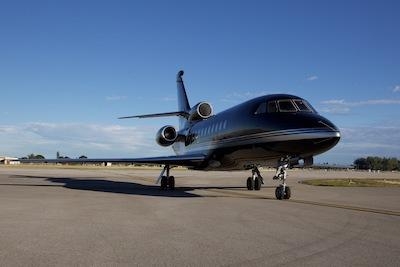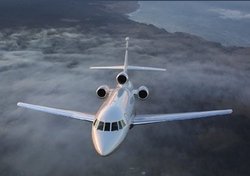Bright New Ideas for a Venerable Aircraft
Founded in 1963 as Precision Winding Inc., the company known today as PWI provides lighting and electrical engineering services across the aviation, agricultural, automotive, motorcycle, and military sectors. Formerly an OEM producer of interior fluorescent lighting schemes for business jet manufacturers the likes of Falcon, Gulfstream, Cessna (Citation), and Bombardier (Learjet), PWI is currently the OEM for most Beechcraft King Air interior lighting systems.

On 10 April 2023, PWI announced it has received FAA Parts Manufacturing Approval (PMA) for the LED lighting system the Wichita, Kansas-based company developed to replace the OEM fluorescent cabin lighting of Dassault’s Falcon 900B business jet. The new PWI LED architecture makes use of the original wiring of the Falcon 900B’s cabin lighting system and replaces the entirety of the OEM fluorescent lighting in the aircraft’s passenger cabin, lavatory, and galley areas.
PWI president and CEO Robi Lorik stated: “The Falcon 900B is a proven, reliable, workhorse aircraft and PWI is grateful for the original opportunity to supply cabin lighting. Today, we are excited to bring our LED cabin lighting back to this business jet. Our cabin completion and MRO installation centers have encouraged us to complete this lighting update. PWI is looking to expand approved LED lighting to additional business jets this year.”
Dassault designed the Falcon 900B to support two different interior lighting options. The first features two long runs of lights installed parallel to the venerable tri-jet’s longitudinal axis—one up-washing onto the cabin’s headliner, and the other down-washing above the windows lining both sides of the Falcon’s cabin. The second lighting option comprises louvered lights in the cabin headliner. The down-washing lights are common to both options.
The installation of PWI’s LED lighting is prosaically straightforward. Utilizing the Falcon 900B’s original electrical wiring, PWI’s LEDs are installed in the selfsame locations as the OEM fluorescent lights. PWI supplies the LEDs with the correct aircraft electrical connectors.
The PWI LED cabin lighting design preserves the upwash and downwash indirect lighting for which the Falcon 900B is known. Ergo, operators and maintainers of the aircraft need neither install nor learn to use and manage complicated new lighting control systems.
PWI LEDs are known for long life, compatibility with extant cabin management systems and potentiometers, and low power-draw. The newly-approved LEDs are designed specifically for the Falcon 900B and are not a one-size-fits-all generic lighting solution.
Mr. Lorik remarked: “You can spend far more money on cabin lights, but you don’t have to.”

Some cabin LEDs require the purchase and installation of third-party cabin management systems. Because PWI LED systems utilize original cabin lighting controls, customers are spared the complexity and expense of extensive cabin retrofits—thereby returning their aircraft to service more quickly and economically.
The PWI LED lighting scheme was designed to retain the 900B’s original cabin appearance. The system is without dark spots or lighting gaps—an important feature in long runs of lighting through open passenger cabins. Competing fluorescent and even LED systems are often plagued by dim or dark spots between lighting elements. PWI’s fluorescent systems rectified such shortfalls in the 1970s and today carries on PWI’s reputation for innovation and quality.
Whether the host aircraft is plied to business travel, charter, or special missions, PWI LEDs provide operators long life and minimal power draw. In non-APU aircraft, low-power LED lighting enables flight-crews to easily intensify the brightness of air-stair and flood lighting during passenger boarding without over-taxing the ship’s battery or batteries.
 Classic Aero-TV: In Praise of Alabamas Patriot Aircraft USA
Classic Aero-TV: In Praise of Alabamas Patriot Aircraft USA NTSB Final Report: Cirrus Design Corp SR22
NTSB Final Report: Cirrus Design Corp SR22 ANN's Daily Aero-Term (12.21.25): Dead Reckoning
ANN's Daily Aero-Term (12.21.25): Dead Reckoning ANN's Daily Aero-Linx (12.21.25)
ANN's Daily Aero-Linx (12.21.25) Aero-News: Quote of the Day (12.21.25)
Aero-News: Quote of the Day (12.21.25)




